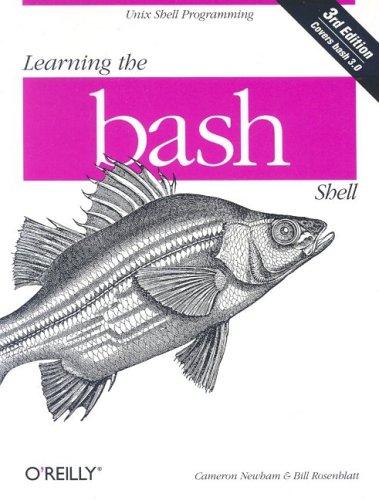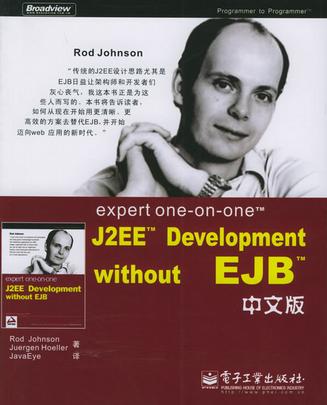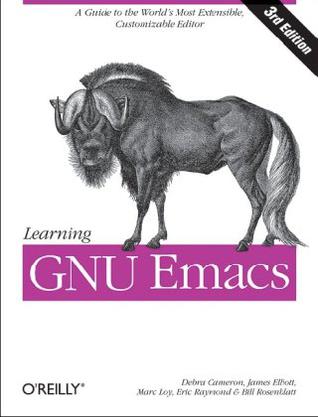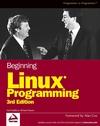-

Learning the bash Shell
This refreshed edition serves as the most valuable guide yet to the bash shell. It's full of practical examples of shell commands and programs guaranteed to make everyday use of Linux that much easier. Includes information on key bindings, command line editing and processing, integrated programming features, signal handling, and much more! O'Reilly's bestselling book on Linux's bash shell is at it again. Now that Linux is an established player both as a server and on the desktop Learning the bash Shell has been updated and refreshed to account for all the latest changes. Indeed, this third edition serves as the most valuable guide yet to the bash shell. As any good programmer knows, the first thing users of the Linux operating system come face to face with is the shell the UNIX term for a user interface to the system. In other words, it's what lets you communicate with the computer via the keyboard and display. Mastering the bash shell might sound fairly simple but it isn't. In truth, there are many complexities that need careful explanation, which is just what Learning the bash Shell provides. If you are new to shell programming, the book provides an excellent introduction, covering everything from the most basic to the most advanced features. And if you've been writing shell scripts for years, it offers a great way to find out what the new shell offers. Learning the bash Shell is also full of practical examples of shell commands and programs that will make everyday use of Linux that much easier. With this book, programmers will learn: * How to install bash as your login shell * The basics of interactive shell use, including UNIX file and directory structures, standard I/O, and background jobs * Command line editing, history substitution, and key bindings * How to customize your shell environment without programming * The nuts and bolts of basic shell programming, flow control structures, command-line options and typed variables * Process handling, from job control to processes, coroutines and subshells * Debugging techniques, such as trace and verbose modes * Techniques for implementing system-wide shell customization and features related to system security -

expert one-on-one J2EE Development without EJB 中文版
乍一看这本书的名字,Expert one on one J2EE development without EJB并没有给人带来太冲击。毕竟关于J2EE的书太多了,而without EJB看上去有点象是故意挑衅EJB的感觉。一本J2EE的书怎么可能会给人带来信念或思维的冲击呢?但是它做到了,它不仅使自己变成了不朽的经典,也使Rod Johnson成为了我最近一年的新偶像。 --xiecc 你的J2EE项目是否耗费了你太多的时间?它们是否难以调试?它们是否效率不彰?也许你还在使用传统的J2EE方案,然而这种主案太过复杂,而且并非真正面向对象。这里的很多问题都与EJB有关:EJB是一种复杂的技术,但它没有兑现自己曾经的承诺。 在这本实战手册中,你将看到另一种截然不同的方案:没有EJB,却可以创建质量更高的应用程序,所需的时间和成本则更低。你将学会如何充分利用各种实用的技巧和工具,包括时下流行的Spring框架和Hibernate两个开源工具。你将看到如何高效地解决企业级应用的核心问题,例如事务管理、持久化、远程调用和web设计。你将了解这种新的方案给可测试性、性能和可伸缩性带来怎样的影响,并亲身体验轻量级架构如何大幅降低项目开发所需的时间和工作量。 自从servlet、EJB、JSP等J2EE技术发布之初,本书作者Rod Johnson就一直在使用这些技术,他对于这些技术的优劣利弊了如指掌。现在,通过这本书,你将可以面对面地分享他的专家经验。 你将从本书学到…… 如何针对自己的应用程序找到最简单、最易维护的架构;在不使用EJB的情况下有效地管理事务;如何利用AOP和loC解决企业级软件开发中的常见问题;web层设计,以web层在设计良好的J2EE应用中的地位;J2EE应用中最有效的数据访问技术,包括JDBC、Hibernate和JDO;如何利用开源产品提升生产率、减少编码量;如何从设计层面上改善性能和可伸缩性。 “传统的J2EE设计思路尤其是EJB日益让架构师和开发者们灰心丧气,我这本书正是为这些人而写的。本书将告诉读者,如何从现在开始用更清晰、更高效的方案去替代EJB,并开始迈向web应用的新时代。” 这本书拥有一大堆“看点”。譬如说,它的作者Rod Johnson拥有10年编写Java程序的经验,目前是Servlet和JDO 2.0两个JSR专家组的成员;再譬如说,书中着力介绍的Spring、Hibernate、WebWork等都是时下流行的开源框架,IoC、AOP之类都是时下流行的概念词汇。而最大的看点就赫然摆在这本书的封面上:“without EJB”。我们曾经在无数的书籍和文章中看到,EJB是J2EE的核心技术之一;而Rod Johnson的这本书竟然宣称,绝大多数的J2EE应用根本不需要EJB。这种近乎挑衅的姿态令任何一个负责的J2EE架构师很难不萌生一探究竟的念头——不论你是打算赞同他还是打算驳斥他。 但所有这些尽皆不是本书最大的价值所在。选择一种架构、一种技术的依据是什么?Rod Johnson认为,应该是基于实践的证据、来自历史项目或亲自试验的经验,而不是任何形式的偶像崇拜或者门户之见。书中谈到了企业应用方方面面的问题和解决办法,而这些方案无一不是这种“循证方法”的产物。除了把这些方案交给读者,Rod Johnson通过这本书希望传达的、更为重要的信息正是“循证”的工作方式——那原本就应该是程序员的工作方式。 -

Java Nio
Many serious Java programmers, especially enterprise Java programmers, consider the new I/O API--called NIO for New Input/Output--the most important feature in the 1.4 version of the Java 2 Standard Edition. The NIO package includes many things that have been missing from previous editions of Java that are critical to writing high-performance, large-scale applications: improvements in the areas of buffer management, scalable network and file I/O, character-set support, and regular expression matching. Most of all, it boosts performance and speed dramatically. Java NIO explores the new I/O capabilities of version 1.4 in detail and shows you how to put these features to work to greatly improve the efficiency of the Java code you write. This compact volume examines the typical challenges that Java programmers face with I/O and shows you how to take advantage of the capabilities of the new I/O features. You?ll learn how to put these tools to work using examples of common, real-world I/O problems and see how the new features have a direct impact on responsiveness, scalability, and reliability. The book includes: * A rundown of the new features in NIO * Basic and advanced I/O Concepts * Binary I/O and the new buffer classes * Memory mapped files and file locking * Character I/O: encoding, decoding and transforming character data * Regular Expressions and the new java.util.regex package * Muliplexing with java.nio Because the NIO APIs supplement the I/O features of version 1.3, rather than replace them, you'll also learn when to use new APIs and when the older 1.3 I/O APIs are better suited to your particular application. Java NIO is for any Java programmer who is interested in learning how to boost I/O performance, but if you're developing applications where performance is critical, such as game computing or large-scale enterprise applications, you'll want to give this book a permanent spot on your bookshelf. With the NIO APIs, Java no longer takes a backseat to any language when it comes to performance. Java NIO will help you realize the benefits of these exciting new features. -

Learning GNU Emacs Third Edition
The third edition of Learning GNU Emacs describes Emacs 21.3 from the ground up, including new user interface features such as an icon-based toolbar and an interactive interface to Emacs customization. A new chapter details how to install and run Emacs on Mac OS X, Windows, and Linux, including tips for using Emacs effectively on those platforms. GNU Emacs is the most popular and widespread of the Emacs family of editors. It is also the most powerful and flexible. Unlike all other text editors, GNU Emacs is a complete working environment--you can stay within Emacs all day without leaving. Learning GNU Emacs, 3rd Edition tells readers how to get started with the GNU Emacs editor. It is a thorough guide that will also "grow" with you: as you become more proficient, this book will help you learn how to use Emacs more effectively. It takes you from basic Emacs usage (simple text editing) to moderately complicated customization and programming. The third edition of Learning GNU Emacs describes Emacs 21.3 from the ground up, including new user interface features such as an icon-based toolbar and an interactive interface to Emacs customization. A new chapter details how to install and run Emacs on Mac OS X, Windows, and Linux, including tips for using Emacs effectively on those platforms. Learning GNU Emacs, third edition, covers: * How to edit files with Emacs * Using the operating system shell through Emacs * How to use multiple buffers, windows, and frames * Customizing Emacs interactively and through startup files * Writing macros to circumvent repetitious tasks * Emacs as a programming environment for Java, C++, and Perl, among others * Using Emacs as an integrated development environment (IDE) * Integrating Emacs with CVS, Subversion and other change control systems for projects with multiple developers * Writing HTML, XHTML, and XML with Emacs * The basics of Emacs Lisp The book is aimed at new Emacs users, whether or not they are programmers. Also useful for readers switching from other Emacs implementations to GNU Emacs. -

Beginning Linux Programming 3rd Edition
What is this book about? If you have some programming experience and are ready to venture into Linux programming, this updated edition of the bestselling entry-level book takes you there. The authors guide you step by step, using construction of a CD database application to give you hands-on experience as you progress from the basic to the complex. You’ll start with fundamental concepts like writing Unix programs in C. You’ll learn basic system calls, file I/O, interprocess communication, and shell programming. You’ll become skilled with the toolkits and libraries for working with user interfaces. The book starts from the basics, explaining how to compile and run your first program. New to this edition are chapters on MySQL® access and administration; programming GNOME and KDE; and Linux standards for portable applications. Coverage of kernel programming, device drivers, CVS, grep, and GUI development environments has expanded. This book gives you practical knowledge for real wor ld application. What does this book cover? In this book, you will learn how to * Develop programs to access files and the Linux environment * Use the GNU compiler, debugger and other development tools * Program data storage aapplications for MySQL and DBM database systems * Write programs that take advantage of signals, processes and threads * Build graphical user interfaces using both the GTK (for GNOME) and Qt (for KDE) libraries * Write device drivers that can be loaded into the Linux kernel * Access the network using TCP/IP sockets * Write scripts that use grep, regular expressions and other Linux facilities Who is this book for? This book is for programmers with some C or C++ experience, who want to take advantage of the Linux development environment. You should have enough Linux familiarity to have installed and configured users on Linux. -

自己动手写操作系统
本书在详细分析操作系统原理的基础上,用丰富的实例代码,一步一步地指导读者用C语言和汇编语言编写出一个具备操作系统基本功能的操作系统框架。本书不同于其他的理论型书籍,而是提供给读者一个动手实践的路线图。书中讲解了大量在开发操作系统中需注意的细节问题,这些细节不仅能使读者更深刻地认识操作系统的核心原理,而且使整个开发过程少走弯路。全书共分7章。附CD-ROM光盘一张。